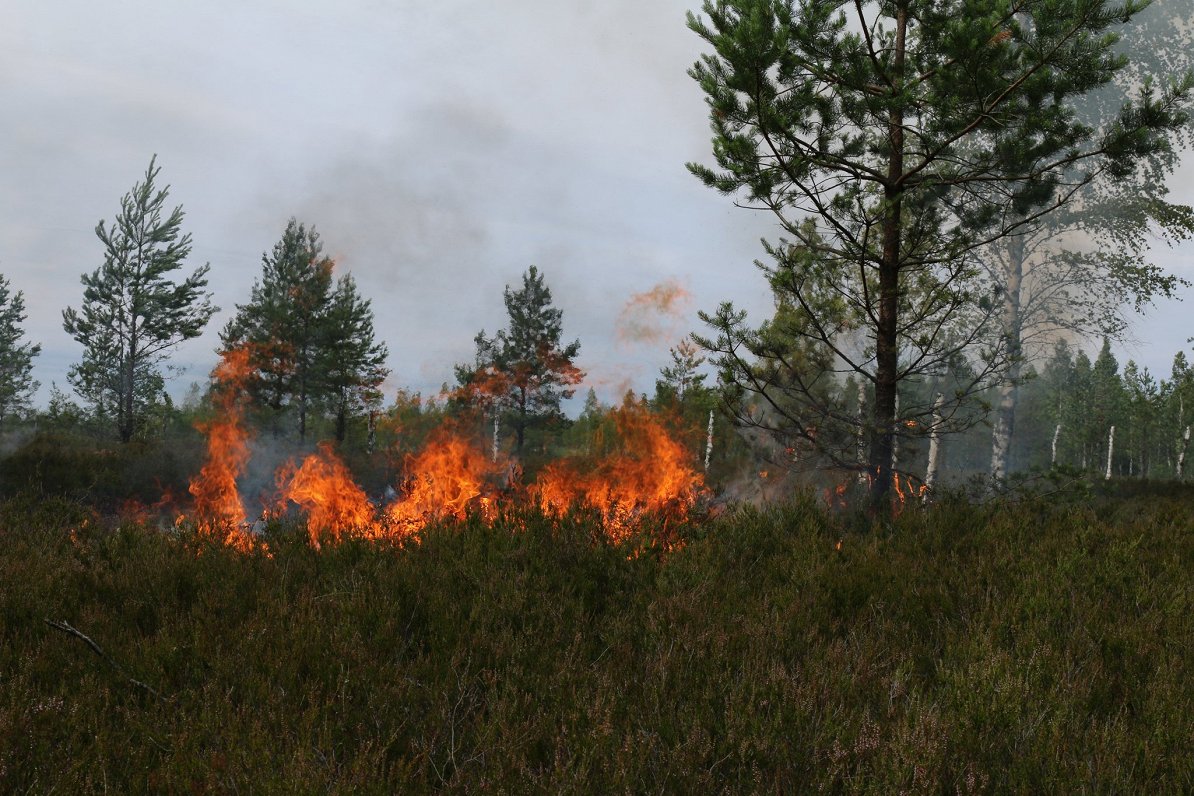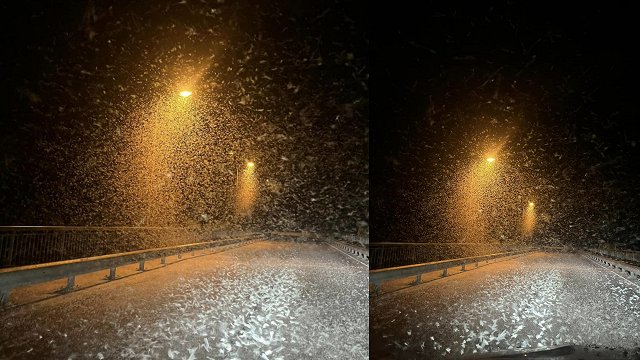As reported numerous times by LSM, this year forest fire hazard is very high due to the ongoing drought. More than 500 forest and dry grass fires have required the attention of the State Fire and Rescue Service in June alone. Most forest fires take place in the forests around big cities – Rīga, Jūrmala, and Daugavpils.
State forest fire safety supervision is performed by the State Forest Service (VMD), which supervises a network of forest fire tracking towers and forest fire fighting stations. The Deputy Head of the Forest and Environmental Protection Division of the VMD, Zigmunds Jaunķiķis, said that during the fire-hazard season, additional employees are recruited: “There are 178 towers, and part the towers have human supervision in them. We also have a pilot project on 12 towers near Rīga, namely the towers have cameras capable of detecting smoke and identifying a rather precise location with coordinates. We have recorded and extinguished more than 400 fires with burned areas of over 500 hectares. Compared to last year, there was a total annual cut of 391 forest fires and a burned forest area of 221 hectares."
LVM operates 1.4 million hectares of forest. The company's Forest Protection and Fire Chief Edijs Leišavnieks said that last year, 40 hectares of forest burned and losses amounted to EUR 190,000, so slightly above 4,000 per hectare on average.
“But if it is a young stand, the figure will be higher; if there has been any burning in a clearing that has not planted the new trees, then there is no loss at all,” says Leišavnieks. “So, primarily, we are taking preventive measures, mineral bands that can stop the fire spreading; we set up water-collection sites in the forests, we place different warning signs, we communicate with the public, inform about risks. The fire is a natural disaster, and the fire could threaten human life, particularly if it expands into larger, uncontrolled areas. As for example, it was in 2018 in the Stiklu swamp, where we had to even evacuate people from a nearby village.”
Arnis Muižnieks, Chairman of the Board of the Latvian Forest Owners Association, said that in private forests, on average, around 200 hectares per year are burned: “We can look at how much the 1-hectare recovery costs. At this point, it could be some €1,800 - so soil preparation, planting, further care, plant costs, but depending on how old the stand has grown, how old it has been, the wood is damaged, so the losses can be even more substantial than the costs of restoring it."
Most commonly, fires in the woods are caused by humans – hikers, tourists, mushroomers and berry pickers who have dropped a match or haven't properly extinguished a bonfire.
Also, a glass bottle, like a magnifying glass, can cause ignition. Therefore, Zigmunds Jaunķiķis recalls how to behave in the woods so that the economic damage caused by fires does not occur: "What is absolutely prohibited is dropping burning objects on the ground, driving motor vehicles offroad. The forest is like powder, and every little carelessness, even perhaps with fire and grill in specially designated places, one small breeze, sparks fly off and a forest fire breaks out."
As long as the long-term drought continues, the forest industry calls on everyone to be very careful and even recommends that the public do not go to the forest at all.



























